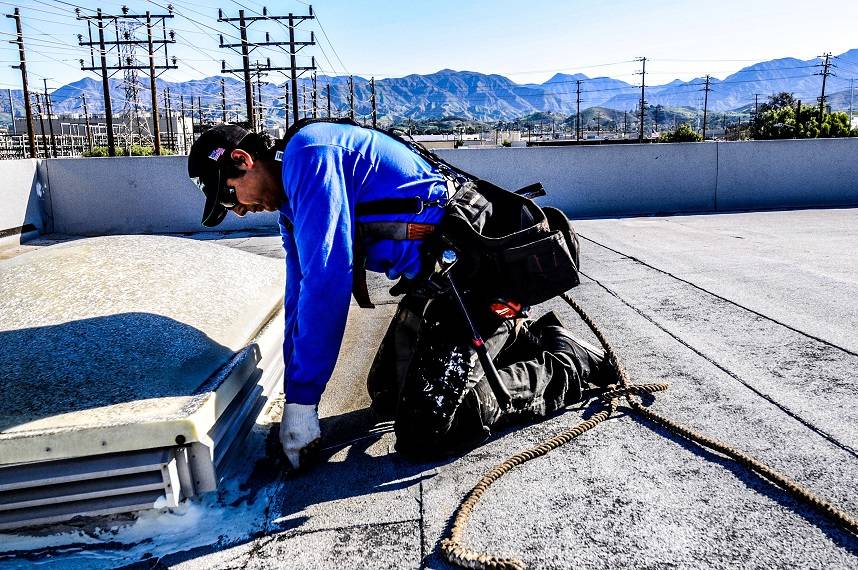Schedule Free Estimate
5 Crazy Ways Wildfires Can Affect Your Roof
As wildfires continue to rage on or structures succumb to fire, the immediate focus is often on the destruction and devastation they leave in their wake. However, beyond the visible damage, there is an often-overlooked consequence that lingers long after the flames have been extinguished: the impact of smoke on roofs. The billowing smoke, filled with a mixture of particles and harmful substances, can have far-reaching effects on the integrity and aesthetics of roofs in the vicinity. Understanding these effects is crucial for homeowners, property managers, and roof restoration professionals alike, as it enables them to assess the potential risks and take appropriate measures to mitigate damage. In this article, we will explore five ways in which smoke from fires can affect roofs, shedding light on the often-unseen consequences and emphasizing the importance of prompt action and preventative measures. By delving into this topic, we aim to raise awareness about the hidden aftermath of fires and equip readers with the knowledge they need to safeguard their roofs against the lingering impact of smoke.
1) Staining:
Smoke contains particles and pollutants that can leave behind unsightly stains on the roof’s surface. These stains can be difficult to remove and may require professional cleaning or pressure washing to restore the roof’s appearance.
2) Corrosion:
Smoke often contains acidic compounds that can corrode metal components on the roof, such as flashing, gutters, or ventilation systems. Over time, this corrosion can weaken these elements, leading to leaks or structural damage.
3) Odor absorption:
Smoke carries strong odors, and these odorous compounds can be absorbed by various roofing materials, including shingles, tiles, or wood. The absorbed odors can persist for a long time, causing unpleasant smells in the surrounding area.
4) Damage to seals and coatings:
Smoke particles can settle on the roof’s surface and compromise the integrity of seals and protective coatings. For example, on flat or low-slope roofs with a membrane or coating, smoke particles can accumulate and degrade the materials, reducing their effectiveness and potentially leading to leaks.
5) Health risks:
While not a direct impact on the roof itself, smoke from fires can pose health risks to individuals residing in the affected area. If smoke enters the building through gaps or openings in the roof, it can contaminate the indoor air quality and pose respiratory hazards. Additionally, the presence of smoke can exacerbate existing respiratory conditions such as asthma or allergies.
Conclusion:
The effects of smoke from fires on roofs are not to be underestimated. From staining and corrosion to odor absorption and damage to seals and coatings, the impact can be substantial and long-lasting. As homeowners and property managers, it is vital to be aware of these potential consequences and take proactive steps to minimize the damage.
Regular roof inspections, especially after nearby fires, can help identify any signs of smoke-related damage early on. Prompt cleaning and maintenance can prevent stains from setting in and mitigate the corrosive effects of acidic particles. In cases where the smoke has penetrated the roof, addressing indoor air quality and potential health risks becomes crucial.
Furthermore, education and awareness play a significant role. By understanding the ways in which smoke can affect roofs, individuals can make informed decisions about preventive measures and appropriate restoration strategies. Consulting with professionals in the field, such as roofing contractors or fire restoration specialists, can provide invaluable guidance and expertise.
Ultimately, protecting roofs from the aftermath of fires goes beyond aesthetics; it is about safeguarding the structural integrity of our homes and buildings. By acknowledging the hidden consequences of smoke and taking proactive measures, we can ensure the longevity and resilience of our roofs, providing a secure and protected shelter for years to come.
Central Roofing Company Headquarters
555 W. 182nd Street
Gardena, CA 90248
310-527-6770

Get A Quote
One of our roofing estimators will gladly meet you to discuss your options and follow up with a free, no-obligation, written estimate.
At Central Roofing Company, we understand that a sturdy and reliable roof is crucial for the success and safety of your commercial property. Our team of highly skilled and trained roofing professionals is committed to delivering exceptional craftsmanship and superior service in every project we undertake.
555 W. 182nd St. Gardena, CA 90248
Ph: 310-527-6770
Our Office Locations:
Our Services
CA license #684960 – Central Roofing, 2024 ©All Rights Reserved | Terms of Use | Privacy Policy | Built by Dymic